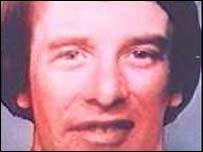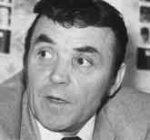
The Provisional Irish Republican Army, officially known as the Irish Republican Army and informally known as the Provos, was an Irish republican paramilitary and proscribed terrorist organisation that sought to end British rule in Northern Ireland, facilitate Irish reunification and bring about an independent republic encompassing all of Ireland. It was the most active republican paramilitary group during the Troubles. It saw itself as the army of the all-island Irish Republic and as the sole legitimate successor to the original IRA from the Irish War of Independence. It was designated a terrorist organisation in the United Kingdom and an unlawful organisation in the Republic of Ireland, both of whose authority it rejected.
The Stevens Inquiries were three official British government inquiries led by Sir John Stevens concerning collusion in Northern Ireland between loyalist paramilitaries and the state security forces. While Stevens declared in 1990 that collusion was "neither wide-spread nor institutionalised", by April 2003 he acknowledged that he had uncovered collusion at a level "way beyond" his 1990 view. Much of Stevens' evidence was obtained from advanced fingerprint techniques to link people to documents. By 2005 the team had identified 2,000 people from their prints with a further 1,015 sets of prints outstanding.
"Stakeknife" is the code name of a high-level spy who successfully infiltrated the Provisional Irish Republican Army (IRA) while working for the top-secret Force Research Unit (FRU) of the British Army. Reports claim that Stakeknife worked for British intelligence for 25 years. Stakeknife has been accused of being a double agent who oversaw the murders of informers within the IRA while working for the British. British officials launched Operation Kenova to investigate these claims of state involvement in the kidnap, torture and murder of more than 50 individuals, leading to the arrest of Freddie Scappaticci in January 2018 on accusations that he was Stakeknife—a claim which Scappaticci denied.
The Force Research Unit (FRU) was a covert military intelligence unit of the British Army's Intelligence Corps. It was established in 1982 during the Troubles to obtain intelligence from terrorist organisations in Northern Ireland by recruiting and running agents and informants.
Freddie Scappaticci is a purported former high-level double agent in the Provisional Irish Republican Army (IRA), known by the codename "Stakeknife".
Stormontgate is the name given to the controversy surrounding an alleged Provisional Irish Republican Army spy ring and intelligence-gathering operation based in Stormont, the parliament building of Northern Ireland. The term was coined in October 2002 after the arrest of Sinn Féin's Northern Ireland Assembly group administrator Denis Donaldson, his son-in-law Ciarán Kearney, and former porter William Mackessy for intelligence-gathering on 4 October 2002.
Eamon Collins was a Provisional Irish Republican Army member in the late 1970s and early 1980s. He turned his back on the organisation in the late 1980s, and later co-authored a book called Killing Rage detailing his experiences within it. In January 1999 he was waylaid on a public road and murdered near his home in Newry in Northern Ireland.
Martin Ingram is the pseudonym of ex-British Army soldier Ian Hurst, who served in the Intelligence Corps and Force Research Unit (FRU). He has made a number of allegations about the conduct of the British Army, its operations in Northern Ireland via the FRU, and against figures in the Provisional Irish Republican Army (IRA) and Sinn Féin.
Martin McGartland is a former British informer who infiltrated the Provisional Irish Republican Army (IRA) in 1989 to pass information to RUC Special Branch.

Brendan Hughes, also known as "The Dark", and "Darkie" was a leading Irish republican and former Officer Commanding (OC) of the Belfast Brigade of the Provisional Irish Republican Army (IRA). He was the leader of the 1980 Irish hunger strike.

The Belfast Brigade of the Provisional IRA was the largest of the organisation's brigades, based in the city of Belfast, Northern Ireland.
Joseph "Joe" Fenton was an estate agent from Belfast, Northern Ireland, killed by the Provisional Irish Republican Army (IRA) for acting as an informer for RUC Special Branch.

Brian Nelson was an Ulster loyalist paramilitary member during The Troubles in Northern Ireland. He was an intelligence chief of the Ulster Defence Association (UDA), and also a clandestine agent for the British Army's Force Research Unit during the conflict.
The Military Reaction Force, Military Reconnaissance Force or Mobile Reconnaissance Force (MRF) was a covert intelligence-gathering and counterinsurgency unit of the British Army active in Northern Ireland during the Troubles. The unit was formed during the summer of 1971 and operated until late 1972 or early 1973. MRF teams operated in plain clothes and civilian vehicles, equipped with pistols and submachine guns. They were tasked with tracking and arresting or killing members of the Provisional Irish Republican Army (IRA). It is alleged that the MRF killed a number of Catholic civilians in drive-by shootings.

Tommy "Tucker" Lyttle, was a high-ranking Ulster loyalist during the period of religious-political conflict in Northern Ireland known as "the Troubles". A member of the Ulster Defence Association (UDA) – the largest loyalist paramilitary organisation in Northern Ireland – he first held the rank of lieutenant colonel and later was made a brigadier. He served as the UDA's spokesman as well as the leader of the organisation's West Belfast Brigade from 1975 until his arrest and imprisonment in 1990. According to journalists Henry McDonald and Brian Rowan, and the Pat Finucane Centre, he became a Royal Ulster Constabulary (RUC) Special Branch informer.
Thomas Oliver was a 43-year-old Irish farmer who was tortured and murdered by the Provisional Irish Republican Army in 1991, reportedly for passing information to the Garda Síochána. However, in the wake of the Stakeknife case it began to be suspected that Freddie Scappaticci – who ran the IRA's Internal Security Unit, which was responsible for torturing and killing Thomas Oliver – killed Oliver to conceal his identity as a double agent.

The Jonesborough ambush took place on 20 March 1989 near the Irish border outside the village of Jonesborough, County Armagh, Northern Ireland. Two senior Royal Ulster Constabulary (RUC) officers, Chief Superintendent Harry Breen and Superintendent Bob Buchanan, were shot dead in an ambush by the Provisional IRA South Armagh Brigade. Breen and Buchanan were returning from an informal cross-border security conference in Dundalk with senior Garda officers when Buchanan's car, a red Vauxhall Cavalier, was flagged down and fired upon by six IRA gunmen, who the policemen had taken for British soldiers. Buchanan was killed outright whilst Breen, suffering gunshot wounds, was forced to lie on the ground and shot in the back of the head after he had left the car waving a white handkerchief. They were the highest-ranking RUC officers to be killed during the Troubles.
Catherine and Gerard Mahon were a husband and wife who lived in Twinbrook, Belfast. Gerard, aged twenty-eight, was a mechanic; Catherine, was twenty-seven. They were killed by the Provisional Irish Republican Army (IRA) on 8 September 1985, the IRA alleging they were informers. However at least two of those responsible for their deaths were later uncovered as British agents within the IRA's Internal Security Unit, leaving the actual status of the Mahons as informers open to doubt.
John Joe McGee was an IRA volunteer who was formerly in the British Special Boat Service.
Margaret Perry was a 26-year-old woman from Portadown, County Armagh, Northern Ireland who was abducted on 21 June 1991. After a tip from the IRA, her body was found buried across the border in a field in Mullaghmore, County Sligo, Ireland, on 30 June 1992. She had been beaten to death. Her murder has never been solved.





